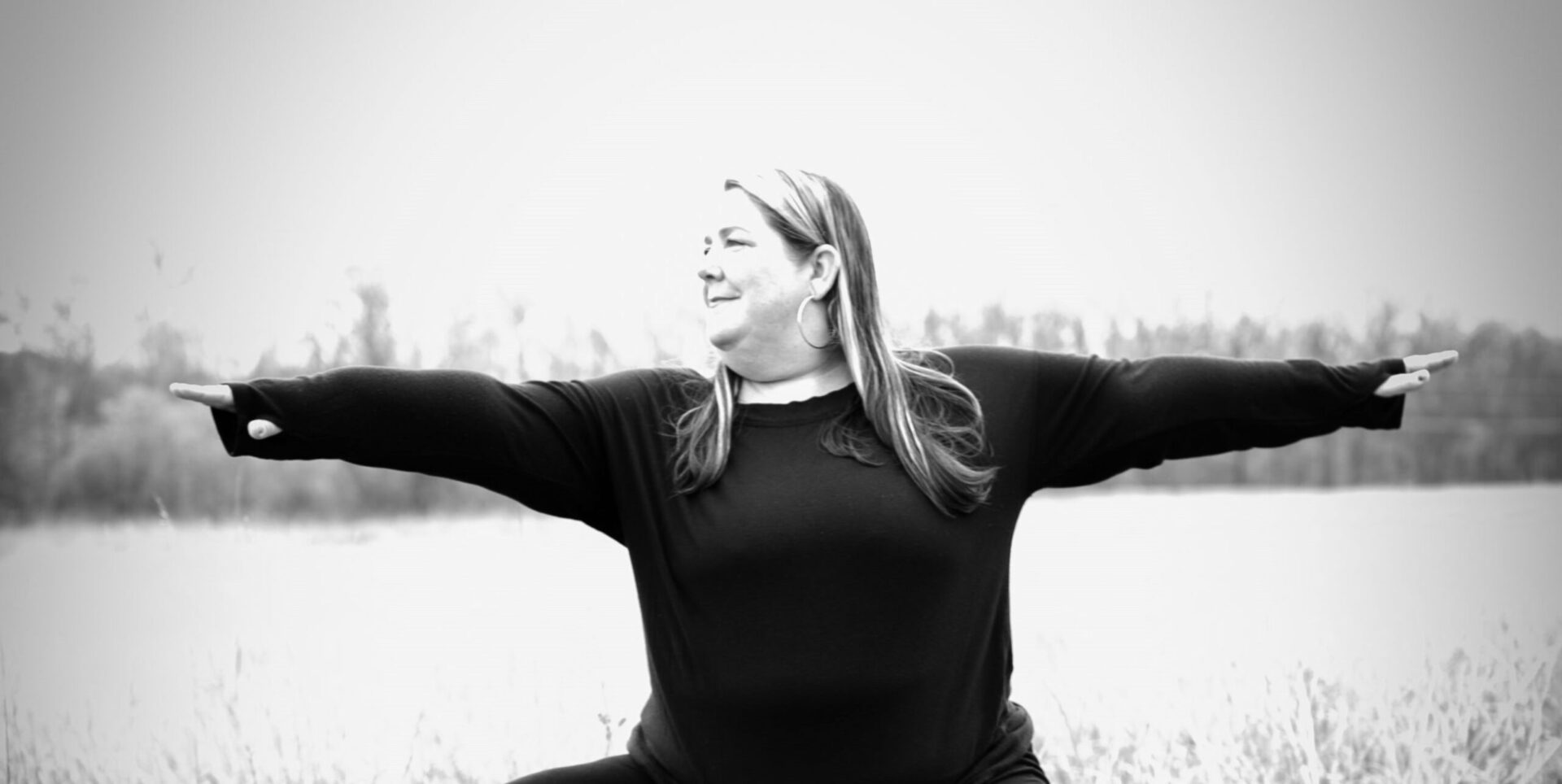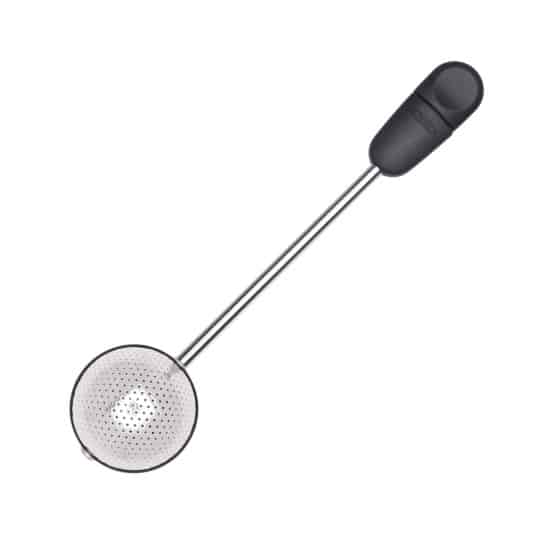Thriving with Chair-Based Yoga | By Amy Zellmer
My yoga journey began like many people’s — at a fitness class in college. Through the years, I tried different yoga classes at the gym: yoga pump, yoga burn, etc. But somewhere in my late 20s, I decided it was time to properly learn yoga poses. I purchased the Yoga for Dummies DVD with Sara Ivanhoe and found a yoga teacher who transformed my yoga into a way of life, as it was meant to be. I was hooked.
It wasn’t until a fall on ice left me with a traumatic brain injury (TBI), along with numerous physical injuries, that I would truly come to understand the full potential of yoga and how it can positively serve us.
Among the serious physical injuries I sustained were a dislocated sternum and severe whiplash. Combined with the crazy TBI symptoms that included dizziness, lack of balance, depth perception issues and numerous cognitive issues, I was in need of some helpful guidance. I met with my yoga teacher privately to figure out what poses I could actually do, and those ended up being reduced to five: tree pose holding onto a chair, cat/cow, seated twists, eagle arms and cobra.
My sternum injury had left me only able to take shallow breaths — unable to get my breath down past my diaphragm. I began daily breath work, along with my five poses, and as the days went on, I noticed my range of motion was increasing. In addition, my balance was becoming more stable, and my dizziness wasn’t triggered as frequently.
Most importantly, yoga had helped me turn inward, and it guided me to listen to my body in ways I never had done before.
My road to recovery was long. It has been nine years, and I’m still re-creating myself in some ways. I will never be the same person I was before my accident, and I have come to accept and embrace that fact. I looked for yoga teachers and classes that could accommodate me with
my modifications and quickly found that most studios have no idea how to modify classes other than to offer child’s pose (which is not actually a resting pose). Frustrated, I began my own journey of experimenting with yoga at home and figuring out how to make it work for me.
I still didn’t discover chair-based yoga for another few years. I completed my own teacher training in 2020, and while I had been shown how to use the chair as support for standing in tree pose, no one ever showed me how you could do poses while seated. This was a game-changer for me and led me down a new path in my own classes.
My own experiences transformed the way I teach. My yoga students are mostly brain injury survivors and those with other neurological and cognitive conditions.
I genuinely understand that if you have never had to modify your yoga due to an injury or illness, it’s not top of mind for you. And, far too many teacher trainings guide us to put a student in child’s pose or mountain pose if they need a rest. We tend to think that the modifications we have been taught apply across the board to every student with different abilities or body types. (Hint: they don’t.)
I believe that every single yoga teacher should know how to instruct a student in a chair and help them navigate class in an accessible and compassionate way. Yoga is an individual journey, even though we often practice as a group.
There is already too much of a stigma around yoga that you have to be skinny and bendy and able to get into impossible poses to participate. That is most certainly not true. Remember, asana is only one limb of yoga and is often the first way folks experience it. If we can make it more accessible to everyone, we have an opportunity to help individuals thrive in their practice and lives.
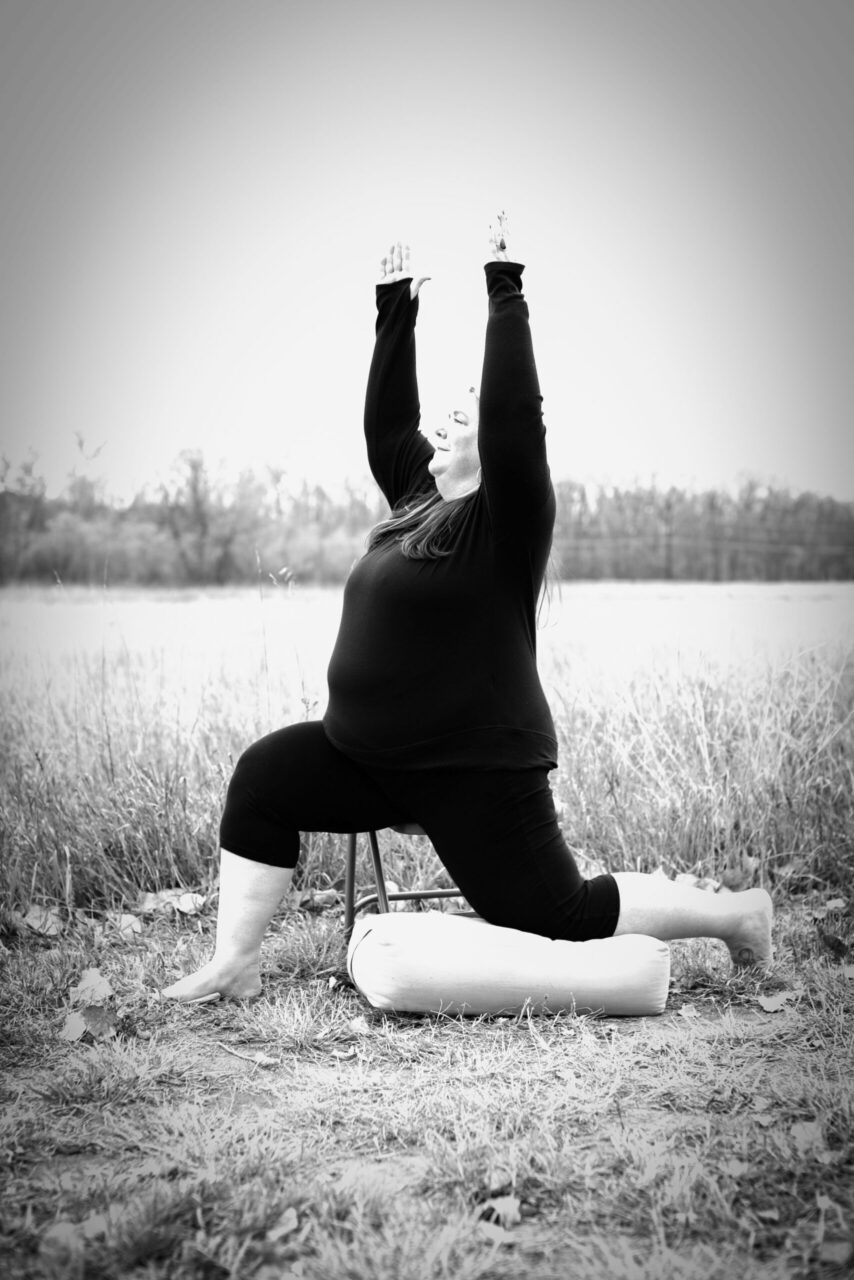 WARRIOR I (Virabhadrasana I): Come to the corner of your chair and place a bolster or pillow on the floor to support your knee. Bend the front knee and push your foot into the floor. You can either raise your hands overhead, bring them to cactus or simply keep them on your hips.
WARRIOR I (Virabhadrasana I): Come to the corner of your chair and place a bolster or pillow on the floor to support your knee. Bend the front knee and push your foot into the floor. You can either raise your hands overhead, bring them to cactus or simply keep them on your hips.
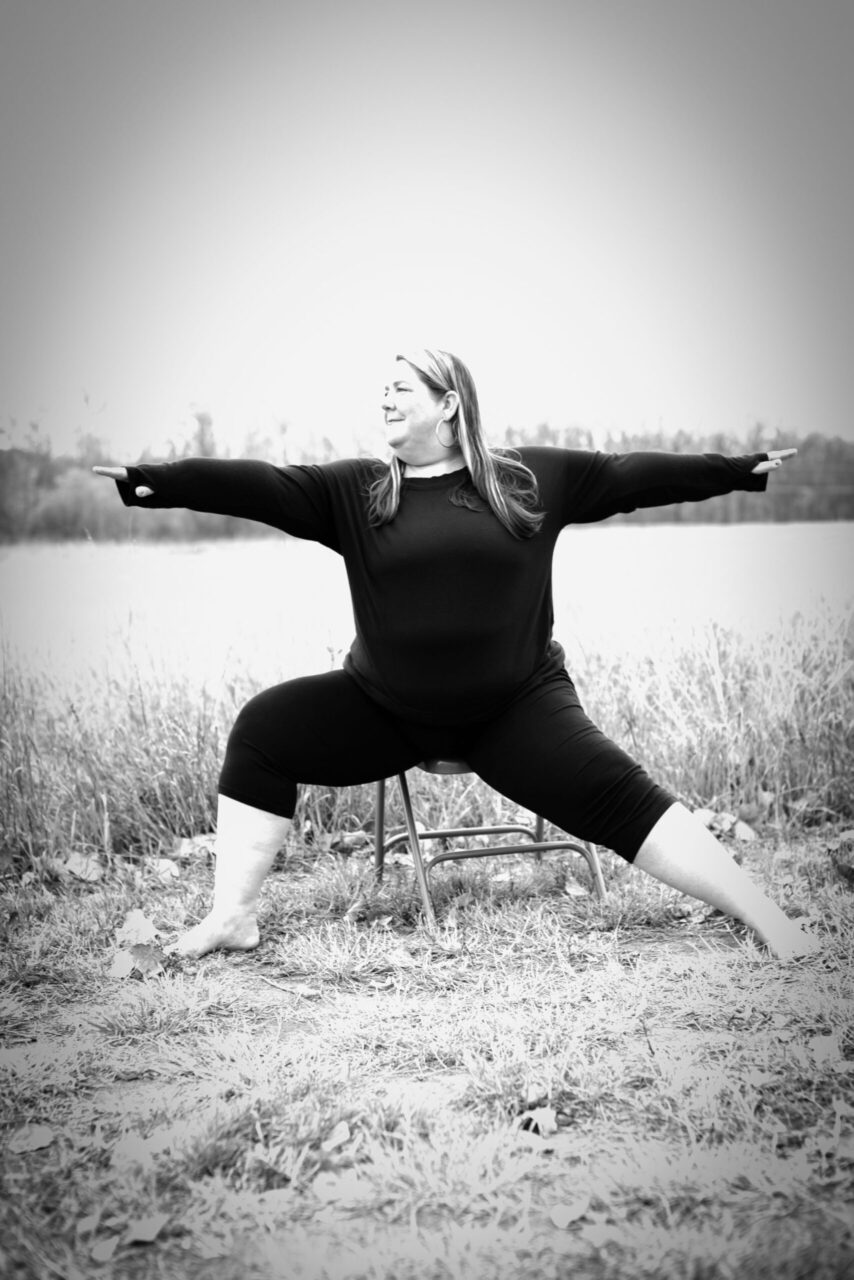 WARRIOR II (Virabhadrasana II): Come to the corner of your chair and bend your front knee while extending your back foot out. Lift your arms to your sides, or you may keep them on your hips.
WARRIOR II (Virabhadrasana II): Come to the corner of your chair and bend your front knee while extending your back foot out. Lift your arms to your sides, or you may keep them on your hips.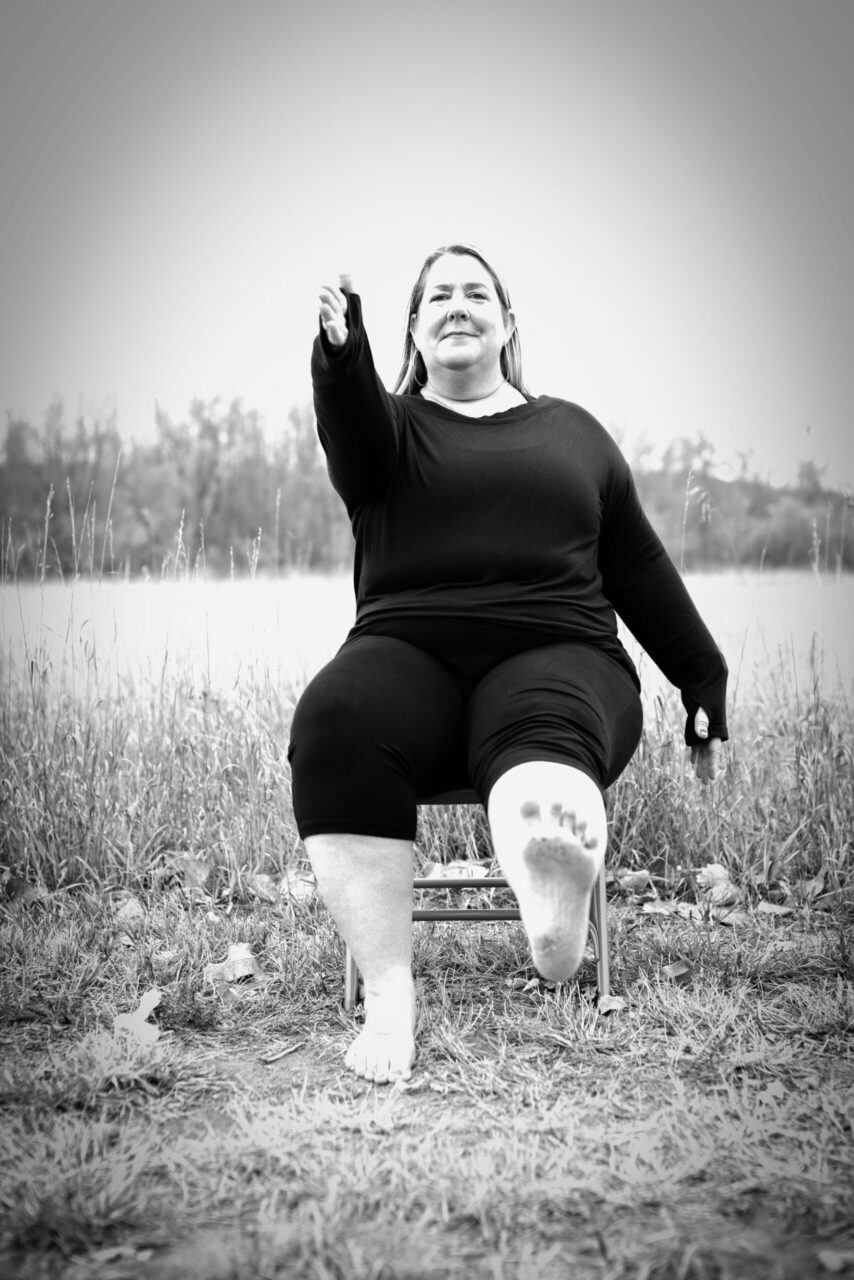 BIRD DOG (Dandayamana Bharmanasana): Sitting to the front of your chair, keeping both sit bones equal on the chair, lift your right leg out in front while raising your left arm overhead (or to cactus). You may also lift your foot off the ground and bring your knee up instead of extending your leg.
BIRD DOG (Dandayamana Bharmanasana): Sitting to the front of your chair, keeping both sit bones equal on the chair, lift your right leg out in front while raising your left arm overhead (or to cactus). You may also lift your foot off the ground and bring your knee up instead of extending your leg.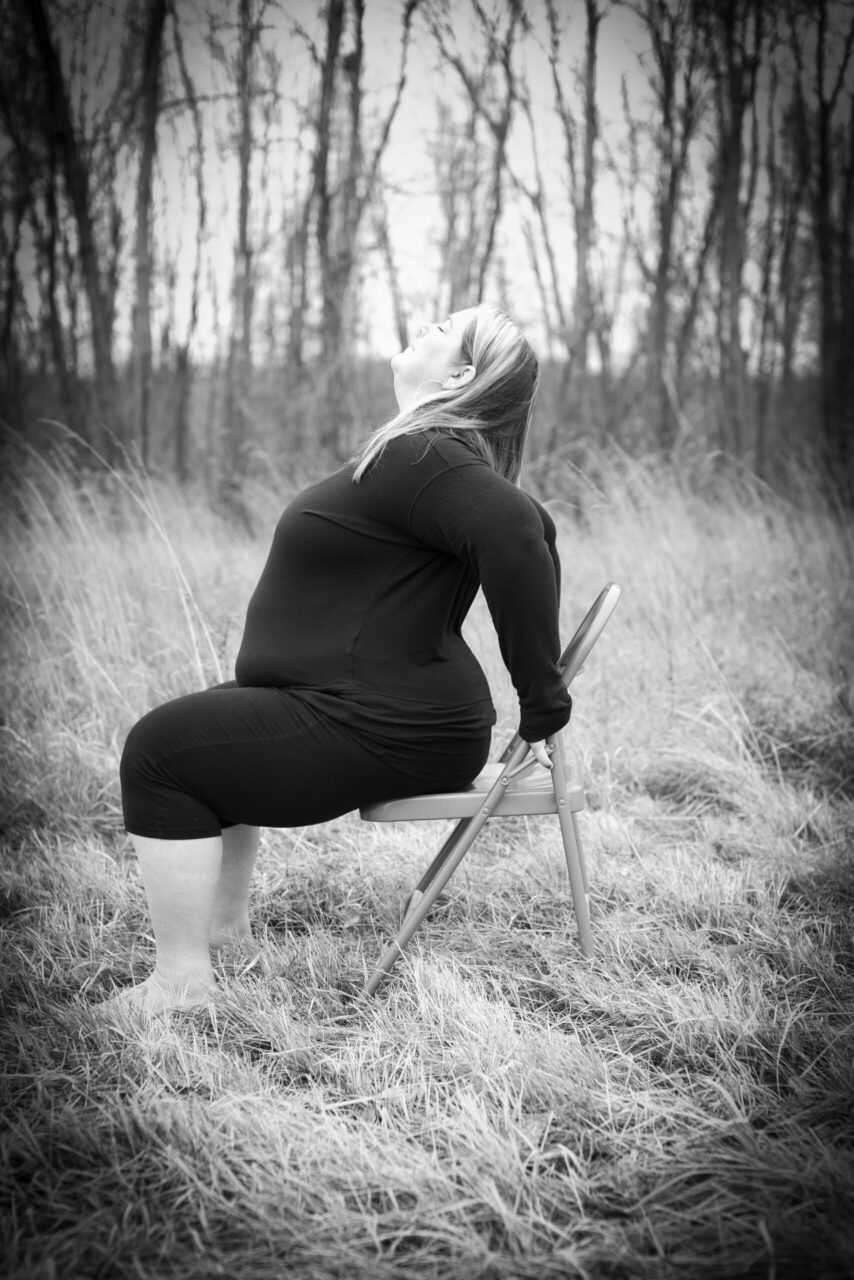 CAMEL (Utrasana): Sitting to the front of your chair, bring your hands to the back of your chair while slowing coming into a backbend, only bending as far as it feels comfortable for you. You may also place a block behind you if that is easier to reach than the back of the chair.
CAMEL (Utrasana): Sitting to the front of your chair, bring your hands to the back of your chair while slowing coming into a backbend, only bending as far as it feels comfortable for you. You may also place a block behind you if that is easier to reach than the back of the chair.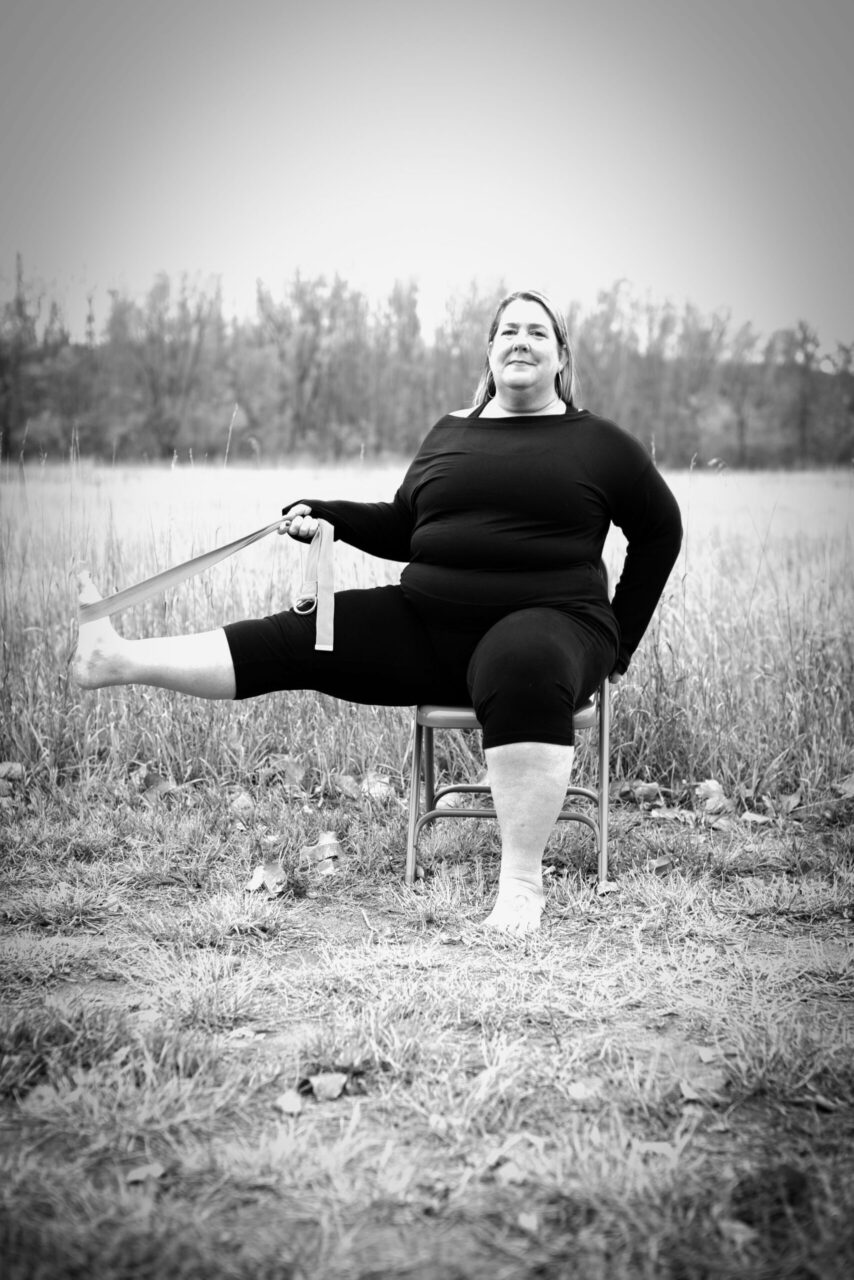 EXTENDED HAND-TO-BIG-TOE (Utthita Hasta Padangustasana): Sitting to the front of your chair, place a strap around one foot. Make sure your sit bones stay equal on the seat as you raise your foot up off the floor (try holding the strap with just one hand if you can, so that you’re not twisting your body). Then, slowly bring your leg out to the side while again checking in with your sit bones.
EXTENDED HAND-TO-BIG-TOE (Utthita Hasta Padangustasana): Sitting to the front of your chair, place a strap around one foot. Make sure your sit bones stay equal on the seat as you raise your foot up off the floor (try holding the strap with just one hand if you can, so that you’re not twisting your body). Then, slowly bring your leg out to the side while again checking in with your sit bones.Originally published in Summer + Fall 2023 issue of Colorado YOGA + life.

AMY ZELLMER
Editor-In-Chief of
MN YOGA + Life Magazine
@amyzellmer • mnyogalife.com
Elevate your tea experience with this must-have accessory. This tea infuser boasts a unique twisting feature, ensuring [...]

Subscribe to Our Tribe
Stay up to date with Y+L News, Events and special announcements.





